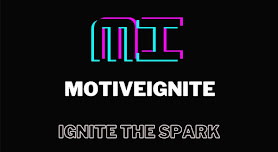Handouts as Public Speaking Tools
Do you know why you should use handouts in a speech? It’s not because it saves time or helps prevent mistakes. It’s about connecting with your audience through visual aids. Handouts are preferred by today’s audiences and are essential tools for effective public speaking. You can write the content of the handout down on paper but don't limit yourself to that option. You can also use a clipboard to display visual aids. It’s surprising how effective this option is. By using a clipboard, you can more effectively communicate your message.
On the other hand, there are many reasons why you might prefer not to use a handout in your speech. Sometimes it just doesn't seem acceptable to the audience that you would write down what they are hearing or reading even if they don’t want to take notes. Handouts may be tedious and make it difficult for the speaker to keep up their concentration on the audience. It may also take too much time to produce the handout which leaves the audience waiting for too long.
If you have a choice between using a handout or not using one, make sure that you first understand the pros and cons of using one. It’s possible that any disadvantages of using a handout could be overcome if it helps you deliver your speech effectively. Remember to consider your audience, their attitudes and whether they would expect a handout if they expected one. Use the following guidelines:
Effective Handouts:
· Use no more than six main points with few sub-points; this is known as an OK Chart ____________'(6) (This only applies to most audience situations. If you are speaking to a specific audience, e.g., doctors or engineers, the number of handouts may change. You might also want to use more than an OK Chart if you want your audience to think that you have covered all the main points when you really haven't.)
· Each main point should be accompanied by one or two supporting points ______________________(supporting) (This only applies to most audience situations. If you are speaking more specifically to a particular group, e.g., doctors or engineers, the number of handouts may change.)
· Make sure that each point's material is summarized in just one sentence __________(summarize) (This only applies to most audience situations. If you are speaking more specifically to a particular group, e.g., doctors or engineers, the number of handouts may change.)
· The content should be structured in three parts A, B and C ______________(structure) (This only applies to most audience situations. If you are speaking more specifically to a particular group, e.g., doctors or engineers, the number of handouts may change.)
· Use photographs that people can relate to _____________________ (This only applies to most audience situations. If you are speaking more specifically to a particular group, e.g., doctors or engineers, the number of handouts may change. You may also want to use more than one photograph.)
· Have a variety of handouts that show the same idea on different levels ____________________________________ (This only applies to most audience situations. If you are speaking more specifically to a particular group, e.g., doctors or engineers, the number of handouts may change. You may need to use different types of handouts.)
· Avoid using a lot of font and typeface in your handout presentations ______________________(font) (This only applies to most audience situations. If you are speaking more specifically to a particular group, e.g., doctors or engineers, the number of handouts may change.

Post a Comment